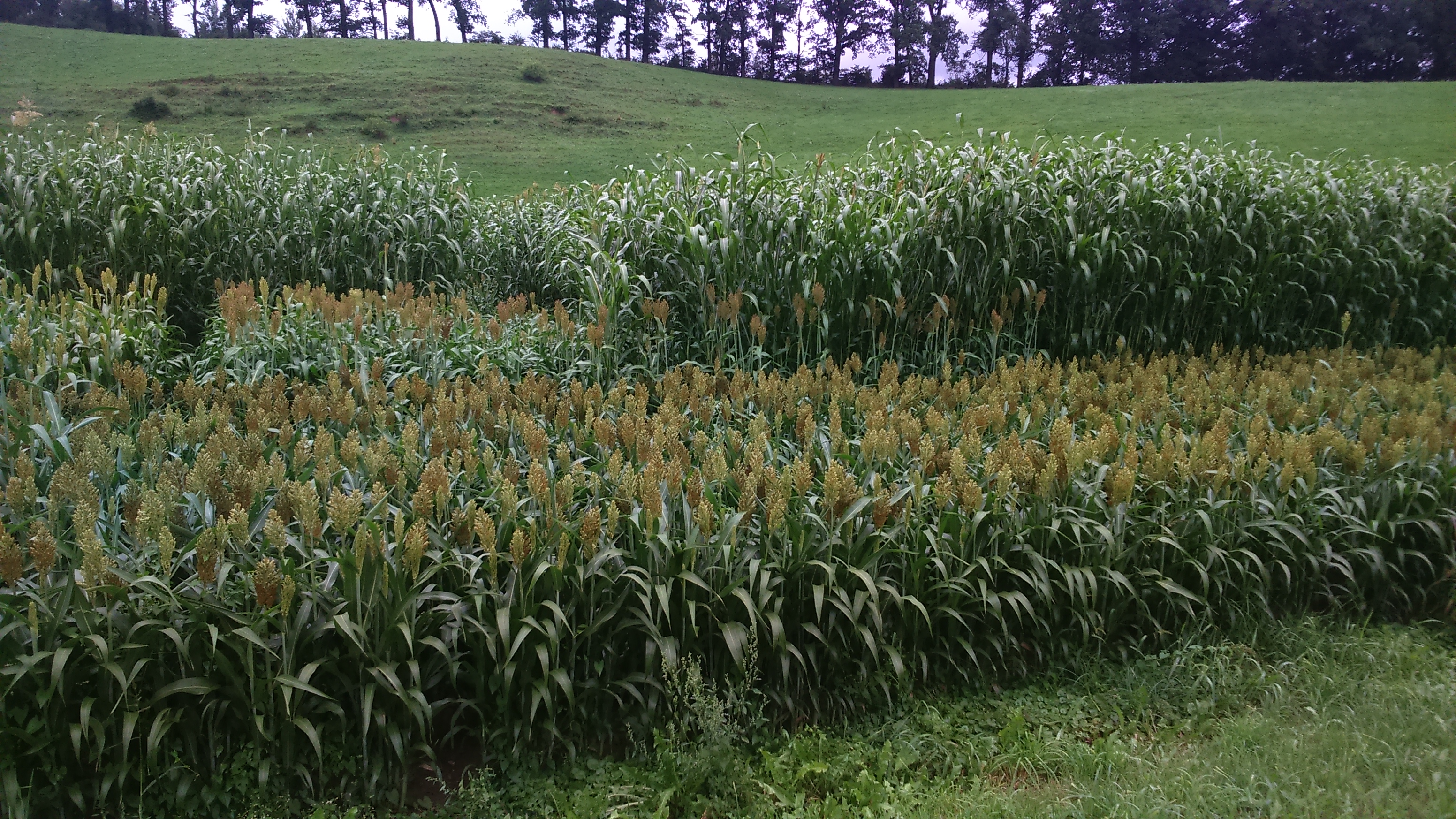In recent years, the emergence of the corn rootworm and increasing dry periods in summer have led to increased damage and crop failures in corn cultivation. For this reason, whole-plant millet silage is increasingly being discussed as an alternative feed for cattle feeding. In order to obtain information on the feed properties of millet silage, the yield, feed value and fermentation properties of millet silage of different varieties were examined and compared with maize silage. The trial was part of the EIP project “Innobrotics”, in which various strategies to reduce damage caused by the corn rootworm were researched.
The range of varieties examined in the experiment ranged from tall biomass millet varieties to silage millet varieties and short-growing grain millet varieties. The results show that although biomass millets achieve high yields, the feed value is low and these varieties are therefore not suitable as feed for cattle. The highest feed value was found in grain millet silages, which is due to the high grain content of this variety type. The silage millet varieties were between biomass millet and grain millet in terms of feed value. However, compared to silage maize (10.7 MJ convertible energy/kg dry matter), even the energy content of the grain millet silage (9.5 MJ convertible energy/kg dry matter) was significantly lower. The crude protein content, however, was higher in the millet silage than in the corn silage.
With regard to the fermentation properties, the low dry matter content of silages made from silage millet varieties (sometimes below 25% DM content) was noticeable, which resulted in losses of fermentation juice. The fermentation quality of the millet silage was comparable to that of corn silage. However, for some millet silages, fermentation did not result in a sufficient pH reduction. Also noticeable were some high ethanol contents in the silages of biomass and silage millet.
The highest feed value of millet silage was found in the “mid-dough” ripening stage. At this point, both a high starch content and a high digestibility and thus a high energy content were achieved. An earlier harvest led to higher losses of fermentation juice, and a later harvest resulted in millet grains falling out. Furthermore, when harvesting, care must be taken to ensure that the comparatively small millet grains are broken down appropriately, otherwise many undigested millet grains end up in the feces.
The lower feed value compared to corn silage speaks against the use of whole-plant millet silage in cattle feeding. However, millet silage can be an interesting alternative to corn silage, especially when there is high corn rootworm pressure or long dry periods in summer. When producing millet silage, grain-rich varieties should be used and the harvest should be at the “mid-dough ripeness” stage.
A big thank you goes to all cooperation partners who actively supported us in the course of this project: ARGE Innobrotics (leader: LK Steiermark), Hafendorf Agricultural College and the Steiermark Experimental Department.







